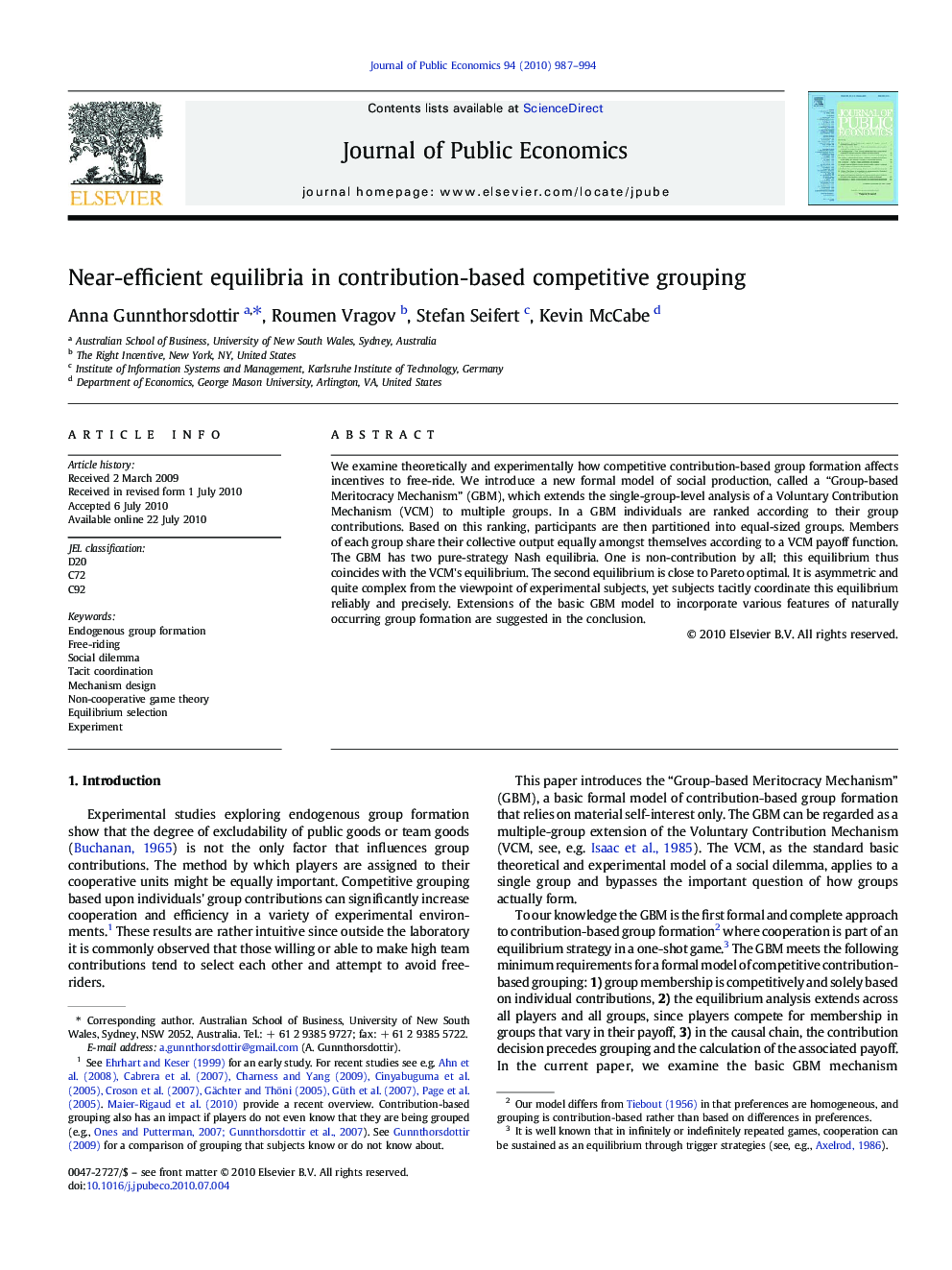| Article ID | Journal | Published Year | Pages | File Type |
|---|---|---|---|---|
| 969813 | Journal of Public Economics | 2010 | 8 Pages |
We examine theoretically and experimentally how competitive contribution-based group formation affects incentives to free-ride. We introduce a new formal model of social production, called a “Group-based Meritocracy Mechanism” (GBM), which extends the single-group-level analysis of a Voluntary Contribution Mechanism (VCM) to multiple groups. In a GBM individuals are ranked according to their group contributions. Based on this ranking, participants are then partitioned into equal-sized groups. Members of each group share their collective output equally amongst themselves according to a VCM payoff function. The GBM has two pure-strategy Nash equilibria. One is non-contribution by all; this equilibrium thus coincides with the VCM's equilibrium. The second equilibrium is close to Pareto optimal. It is asymmetric and quite complex from the viewpoint of experimental subjects, yet subjects tacitly coordinate this equilibrium reliably and precisely. Extensions of the basic GBM model to incorporate various features of naturally occurring group formation are suggested in the conclusion.
